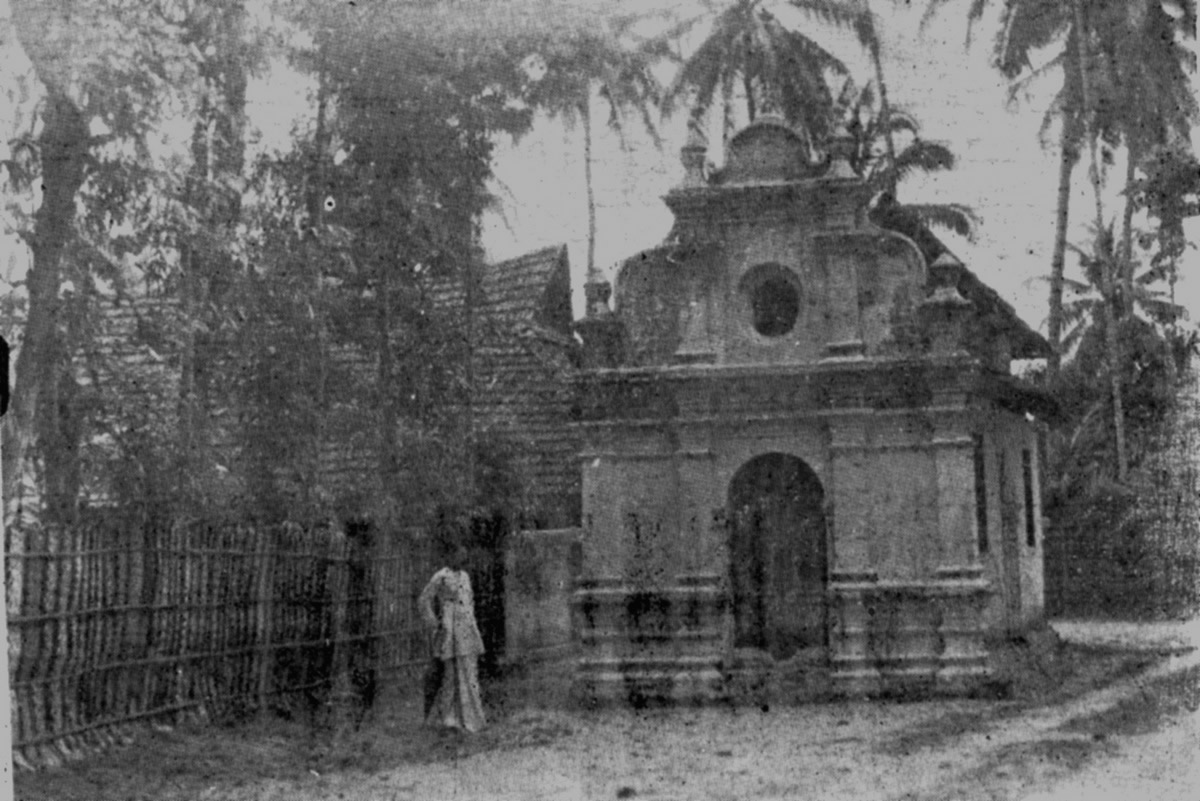Chapter 8
Kadavil Kurisupally, Pallippuram Church and Kallarackal Kadavil Family
Pallippuram Church has a history of about 2000 years old , which is linked with the history and genealogy of the families under this church, who are natives to Pallippuram while a few are migrated from other places. The Christians in the coastal areas due to natural calamities like flood and famine and also for many other reasons have migrated to eastern parts of Kerala like Kuravilangad, Kottayam, Idukki etc. Many of these families maintain a thin and strong link with their ancestral families on this coast. Pallippuram is in the coastal area and it was a desert of white silica sands. At that time paddy cultivation is not possible there. Rice is a precious thing in the area. So people from this place have migrated to other places for their livelihood. The last, large scale migration was during the great flood time which was in ME 1099 (AD 1924). Before centauries (AD 90 onwards), people from the Kallarackal family have started migration, to different parts in Kerala. The Migration to Mulamthuruthy was in AD 1650-1700. The periods of migration to Kaduthuruthy, Kandanad, Piravom, Alappuzha, etc were not identified.
Catholicism of this family is after the Synod of Diamper (Udayamperur) in AD 1599. Before the Catholicism in Kerala, and particularly in Pallippuram these families, or their predecessors were existed . AD 1500 is the years of Catholic intolerance of St. Xavier and other missionaries. It is saying that either father of Chacko Kallarakal or his grandfather is one among the four persons chosen from the Pallippuram Church to attend the Synod of Diamper in 20th June 1599, held at Udayamperoor, as per the summons issued by the Archdeacon of the Christians of St. Thomas in the Serra of the Kingdom of Malabar (St. Thomas Christians) Father George and Menezes Archbishop of Goa. The hindu architecture, a small ancient place of worship near the ferry at Thavanakkadau and the typical traditional vilakku and the architectural motifs would be considered blasphemous and practicing idolatry, in a Catholic church of those years. The existence of this shrine proves that it is of pre-Catholic era of the Syrian church (Mar Thoma Christians). In fact, in history, the Pallippuran Church is one among the pre-Catholic Syrian churches. The origin of Kallarackal Kadavil Family and its offshoot branches can be trace back to the pre-Catholic era of Syrian Christian Church in Kerala. As said earlier Kallarackal Kadavil Family is one among the other different offshoot branches of Kallarackal Family like Pallipram Kallarackal at Mulamthuruthy, Kallarackal at Kumarakom etc. The predecesor of this family is proud to have built the 'Kadavil Kurisupally' using wood etc in the form of a hindu temple next to his house on the southern side and kept the 'sleeba' (believed to be carved by St. Thomas who is said to be an expert carpenter), there and made arrangements to continnued lighting 'keda-vilakku'. This 'Kurusupally' later became the efficient cause for the establishment of the present Pallippuram Church. This 'Kurisupally' after Latinisation of the church is rebuilt to present form.

'Kadavil Kurisupally' and the Kallarackal Kadavil Family
tharavad house on its north side within the fence. (a photograph in 1955).
In between AD 1650 - AD1700, Chacko Varieeth from the Kallarackal Family, settled down in the kadavil purayidom (property) near the Vembanad Lake belongs to the Kallarackal family. Since this purayidom/property is in the Shore of Vembanad Lake, the family used it as private vallakkadavu to park their kettuvalloms and other small valloms. During that time it was the only means of transportation in coastal areas and hence the family owned and used these kettuvalloms and other small valloms for their day to day affairs including agricultural activities. The family traditionally owned large extent of properties in Cherthala, Pallippuram, Vaikom and other different nearby places. At that time there was a traditional and famous public vallakkadavu on the southern side adjacent to the boundary of this kadavil purayidom. This vallakadavu later developed and came to be known as pallikkadavu (as it is near the Kadavil Kurisupally) and now it is the Pallippuram boat jetty. This famous vallakadavu is on the main waterway from the northern ports at Kodungallor & Kochi to the southern ports at Alappuzha and Kollam etc.
Chacko Varieeth's father is Chacko and he has six children including this Varieeth. Since Varieeth has settled down in the kadavil purayidom (that house is seen in the above photograph behind the fence near the' kurishupally'), he and his descendants' family were came to be known by the branch name Kallarackal Kadavil. On account that Chacko Vareeth has established the branch Kallarackal Kadavil Family he is regarded as the the 1st Generation of the Kallarackal Kadavil Family.

